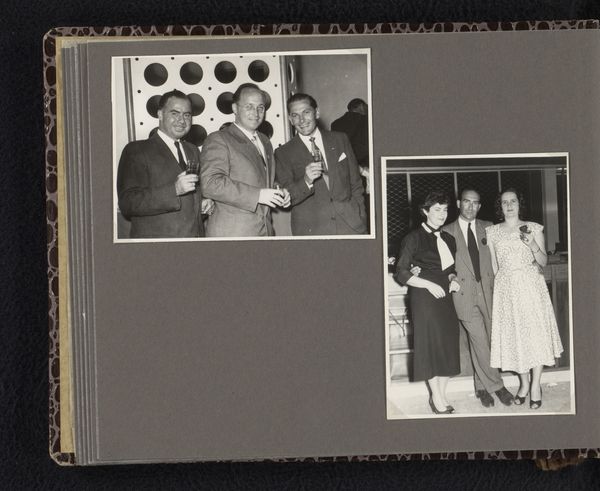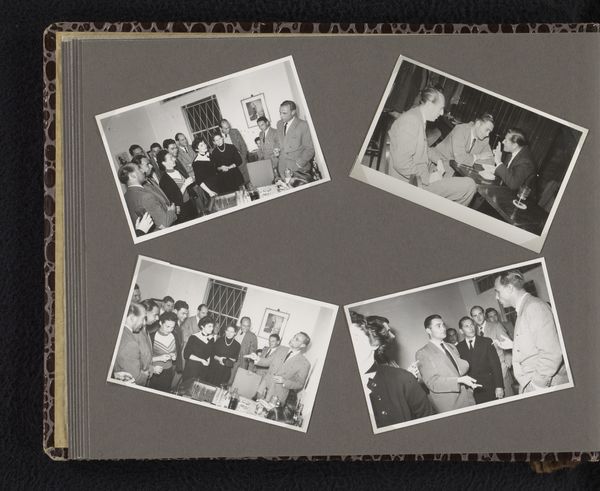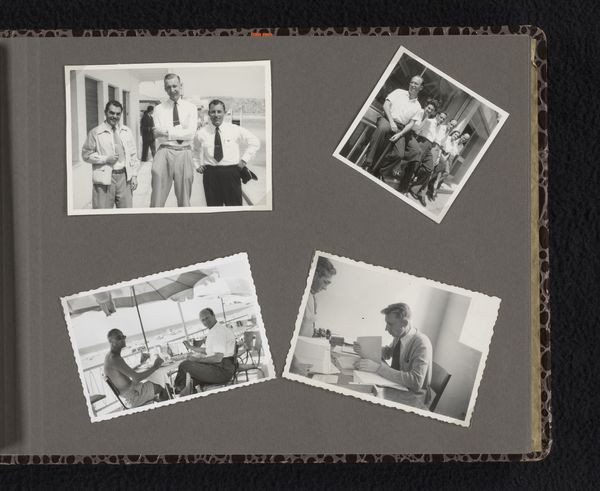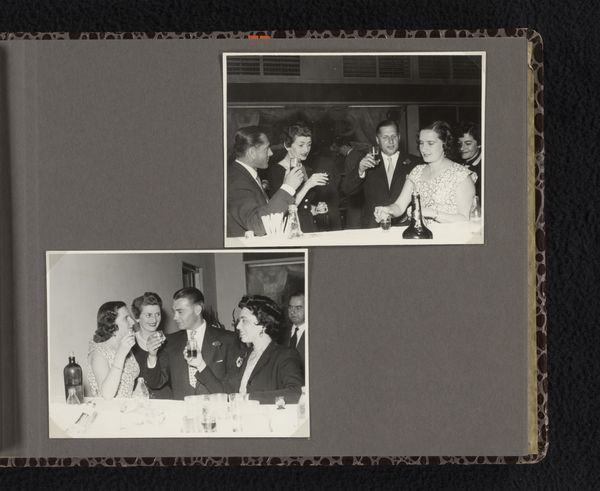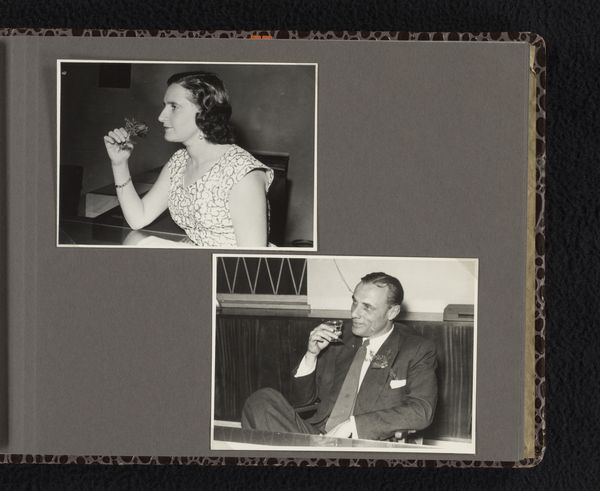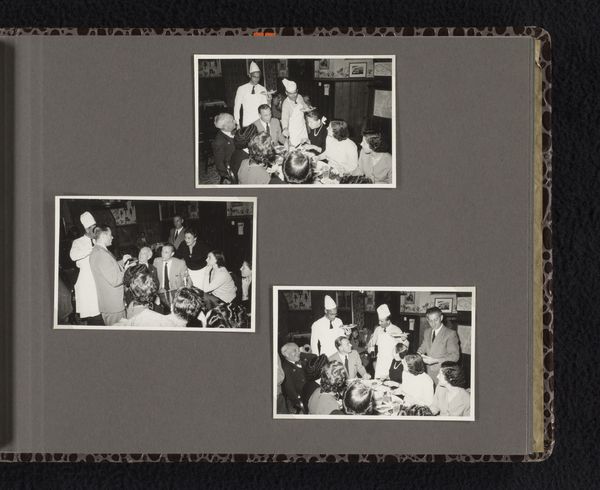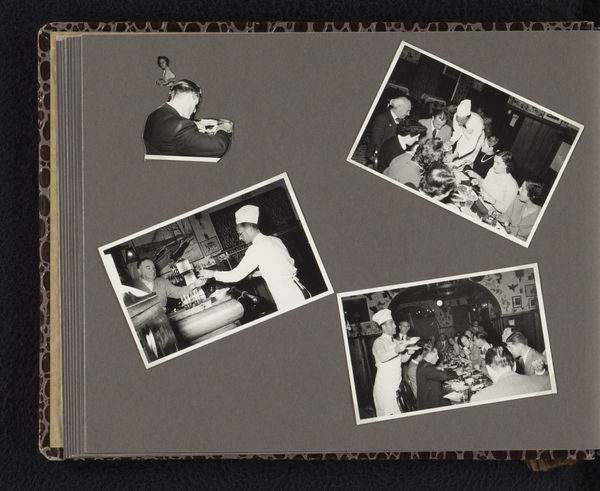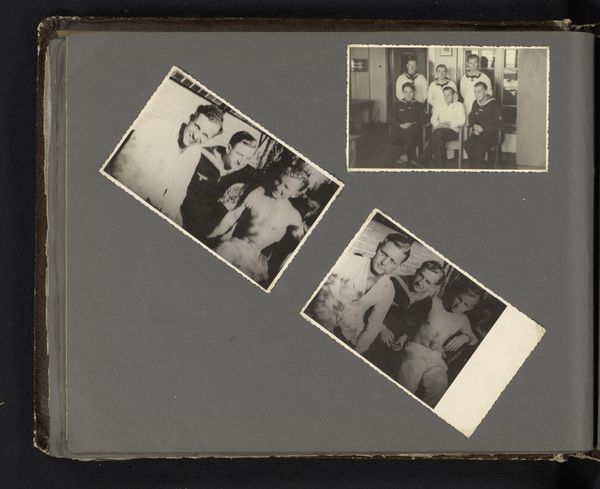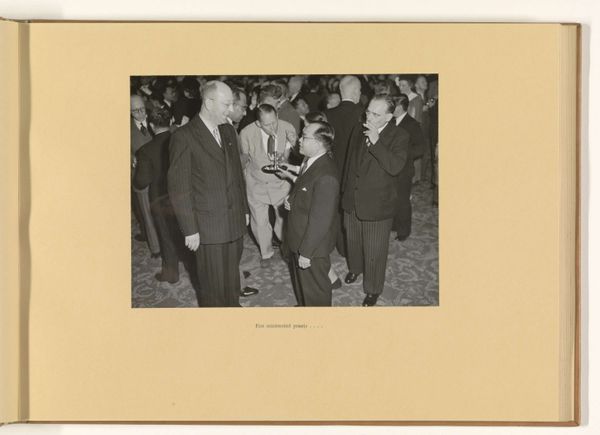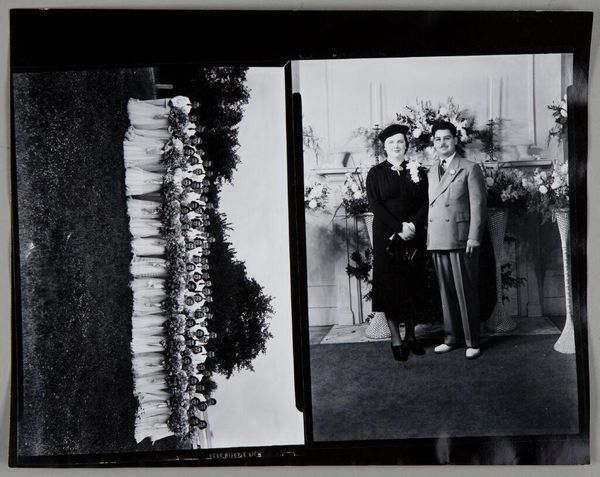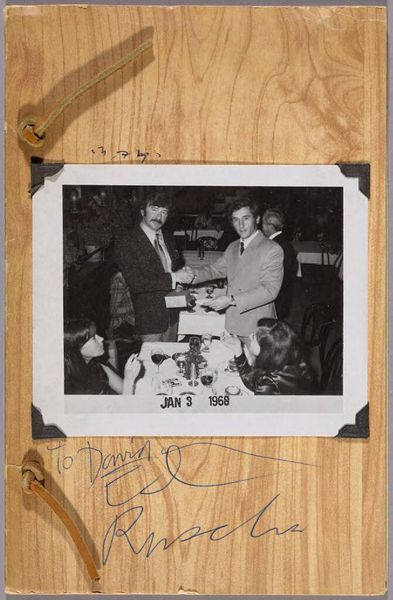
Onbekende collega's van Isabel Wachenheimer tijdens haar periode bij KLM tijdens een feestje, 1947-1955, Israël 1947 - 1955
0:00
0:00
photography, gelatin-silver-print
#
portrait
#
photography
#
photojournalism
#
gelatin-silver-print
Dimensions: height 85 mm, width 115 mm, height 190 mm, width 250 mm
Copyright: Rijks Museum: Open Domain
Curator: Let’s examine this photo album page, dating from between 1947 and 1955, during Isabel Wachenheimer's time at KLM in Israel. The images are gelatin silver prints depicting what appears to be a festive gathering. What are your initial thoughts? Editor: Stark, actually. Something about the tonal range, typical of gelatin-silver prints, heightens the rather formal, almost staged feeling, despite supposedly capturing a party. The social dynamics are certainly palpable, the division between groups clear. Curator: Indeed, there's a definite separation. Look at the top photo: Three men, one with a cigarette, locked in what appears to be intense discussion. While in the other image, several colleagues are observing two figures shaking hands. What can we surmise about the societal context around that moment? Editor: The prominence of men in suits indicates the gendered division of labour typical of the post-war era. We can speculate whether Wachenheimer, the photographer, had equal access within that sphere. The suits also connote authority, the corporatism of major companies like KLM, but who knows if they are really enjoying. Curator: What strikes me is the materiality itself. Gelatin silver prints are a direct result of photographic processes dependent on light-sensitive silver halides. Do you find the nature of these images – their existence as physical objects, to be an interesting point for observation? Editor: Absolutely. These are documents but also representations and products that help build an official version of corporate culture for a very influential company. Consider these celebrations of KLM staff as a form of state-building, a carefully assembled iconography of national progress. The photo-album as a form also serves as both historical testimony but it also becomes part of a construction kit to tell a specific narrative. Curator: A manufactured narrative, quite right. It makes me consider the work of the darkroom technician and the photographic printer: How much were these processes influenced by individual workers? And by broader technological standards around photography? Editor: These images exist in this photo-album as an artifact within specific socio-economic conditions, with gendered assumptions about how to tell the story of a company that had at its roots an important national symbol and endeavor. Curator: Considering those details adds considerable richness to our appreciation of these gelatin-silver prints beyond their surface representation. Editor: Agreed, and situates a small component, this album page, within broader discussions of corporate identity, labour practices, gender dynamics, and technological change in that moment in time.
Comments
No comments
Be the first to comment and join the conversation on the ultimate creative platform.
